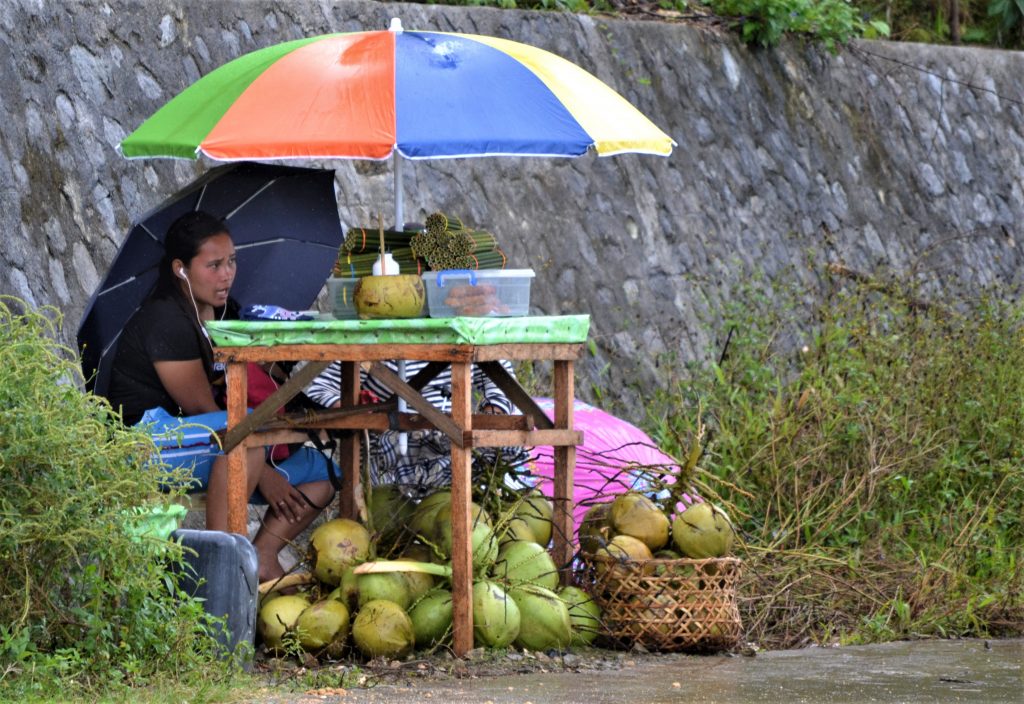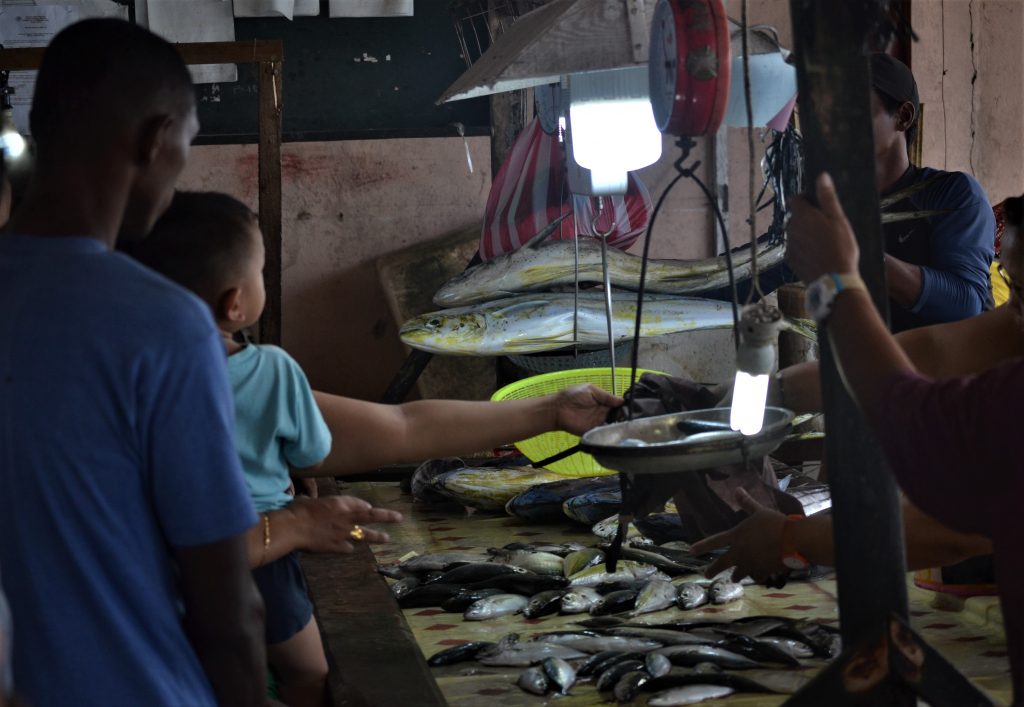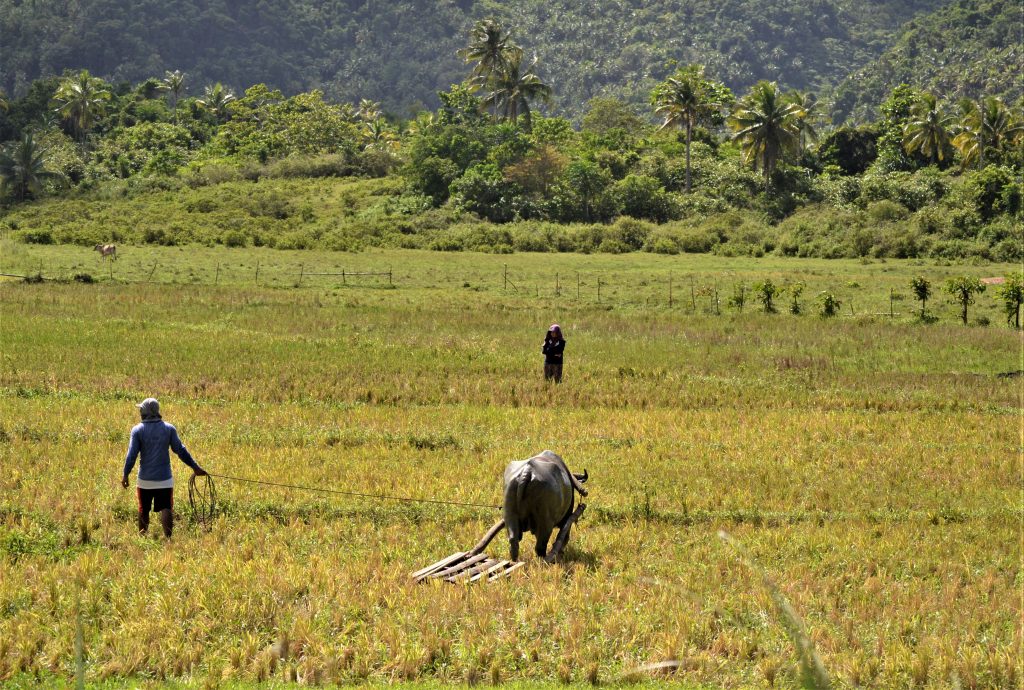“I work a lot in the slums of Tondo, Manila, and the life there is very poor and very sad,” Miss Philippines Catriona Gray replied. “I’ve always taught myself to look for the beauty in it, to look for the beauty in the faces of the children, and to be grateful. I would bring this aspect as a Miss Universe to see situations with a silver lining, and to assess where I could give something, where I could provide something as a spokesperson. If I could teach also people to be grateful, we could have an amazing world where negativity could not grow and foster, and children would have a smile on their face.”
Gray seemed to be following up her opening statement during the pageant. “Working in some of the poorest areas of my country,” she pointed out, “I found that it was a lack of child support, not poverty, that killed their dreams. A child once told me, ‘Cat, that’s just not my life, and those dreams aren’t made for me.’ But I stand here today because someone believed in me and we owe it to our children to believe in them.”

There are several ways of defining poverty. Economists look at it as something that connotes a substandard mode of living. It is, they say, “nothing but economic deprivation or low standard of living characterized by malnourishment, poor housing conditions, inadequate water supply, electricity, and toilet facilities, and functional illiteracy.”
Sociologists, on the other hand, look at poverty in a bigger perspective. “Poverty goes beyond the status of mere economic deprivation,” they contend. For instance, a person who wins a lotto does not instantly deliver himself from poverty. They argued that for these people who grow up in poverty “it is a way of life, remarkably stable and persistent, passed down from generation to generation along family lives.”
In whatever way experts look at poverty, there are some good news. In recent years, poverty level in the country has declined, with 21.6% of Filipinos living the poverty line in 2015, compared to 26.6% in 2006.
“Despite the generally good economic performance, poverty remains high and the pace of poverty reduction has been slow,” said the World Bank report, Making Growth Work for the Poor: A Poverty Assessment of the Philippines.
A report from the Asian Development Bank entitled, Poverty in the Philippines: Causes, Constraints and Opportunities, gave some clearer views on what causes poverty in the country. Although released in 2009 yet, the key findings are still relevant as ever. Poverty, for one, remains a mainly rural phenomenon though urban poverty is on the rise. For another, governance and institutional constraints remain in the poverty response. “There is weak local government capacity for implementing poverty reduction programs,” it said.
Agriculture Secretary Emmanuel F. Piñol knew this. This was the reason why he initiated an agri-related anti-poverty program called Special Area for Agricultural Development (SAAD) in his province when he was governor of North Cotabato (1998-2007).
Saad is actually a Visayan word for “promise.” “Though his good will and dedication, the program took place and was able to provide aid in his home province,” the website of the program stated. “Part of its impact was the alleviation of poverty in the province thus lifting it out of the top 10 poorest countries in the country in 2007 with reduced poverty incidence rate (from 52% down to 29%, based on the Philippine Statistics Authority data).”

So, when President Rodrigo R. Duterte appointed him as the Secretary of Agriculture, “he brought along with him his brainchild program with the purpose of bringing it into a nationwide spectrum.”
The SAAD program is part of the thrust of the Duterte administration to be the lead agricultural development program by 2020 that would help increase food production and reduce poverty in the country. It is composed of two major components: the social preparation and the livelihood interventions.
Social preparation “encompasses the series of training (including needs assessments) in order to ensure readiness and empowerment of the SAAD beneficiaries in accepting and managing the interventions being provided by the program,” the website explained.
The livelihood interventions, on the other hand, “entail livelihood projects to be given based on the assessed needs of the recipients.” Examples include backyard chicken raising, native pig raising, egg production, duck raising and financial assistance in income-earning projects.
“As of this year, 30 provinces have been included in the SAAD program with 30 more to be identified in the remaining three years of the Duterte presidency,” wrote Piñol in his social media account.
The first 10 provinces enrolled into the SAAD program were Apayao, Negros Oriental, Northern and Eastern Samar, Zamboanga del Norte, Lanao del Sur, Maguindanao, North Cotabato, and Sarangani.
Last year, the following provinces were enrolled: Catanduanes, Sorsogon, Masbate, Siquijor, Southern Leyte, Sulu, Bukidnon, Compostela Valley and Sultan Kudarat.
This year, the enrollees are Kalinga, Mountain Province, Occidental Mindoro, Negros Occidental, Antique, Bohol, Misamis Oriental, Lanao del Norte, Agusan del Sur and Surigao del Sur.
“When we implement the SAAD project in the provinces, my instruction was to make sure that there would be a poverty reduction in two years,” Piñol said, adding that provinces enrolled in the program would be covered for two years with 10 new provinces enrolled in the program every year.
The good news is: at least 10 provinces included in the SAAD program have dropped its poverty rate, according to the latest poverty incidence report released by PSA.

“Ten provinces saw huge cuts in poverty incidence in the first half of 2018,” the Business Mirror reported. “Siquijor topped the list, with the rate falling by 39.71 percentage points to 10 percent, followed by Ifugao, falling by 28.38 percentage points to 15.5 percent; Northern Samar, 23.78 percentage points to 30 percent; and Apayao, 23.56 percentage points to 23.3 percent.”
The news report went on: “Other areas where poverty incidence declined are Sorsogon, down by 22.22 percentage points to 24.5 percent; Bukidnon, 22.08 percentage points to 32.1 percent; Catanduanes, 17.93 percentage points to 19.4 percent; Mt. Province, 17.35 percentage points to 24.4 percent; and North Cotabato, 16.75 percentage points to 25.6 percent.”
“While there is no official study yet to determine whether the special programs of the DA directly contributed to the reduction of poverty in these areas,” Piñol reiterated, “this report comes as a great relief to the department.”






